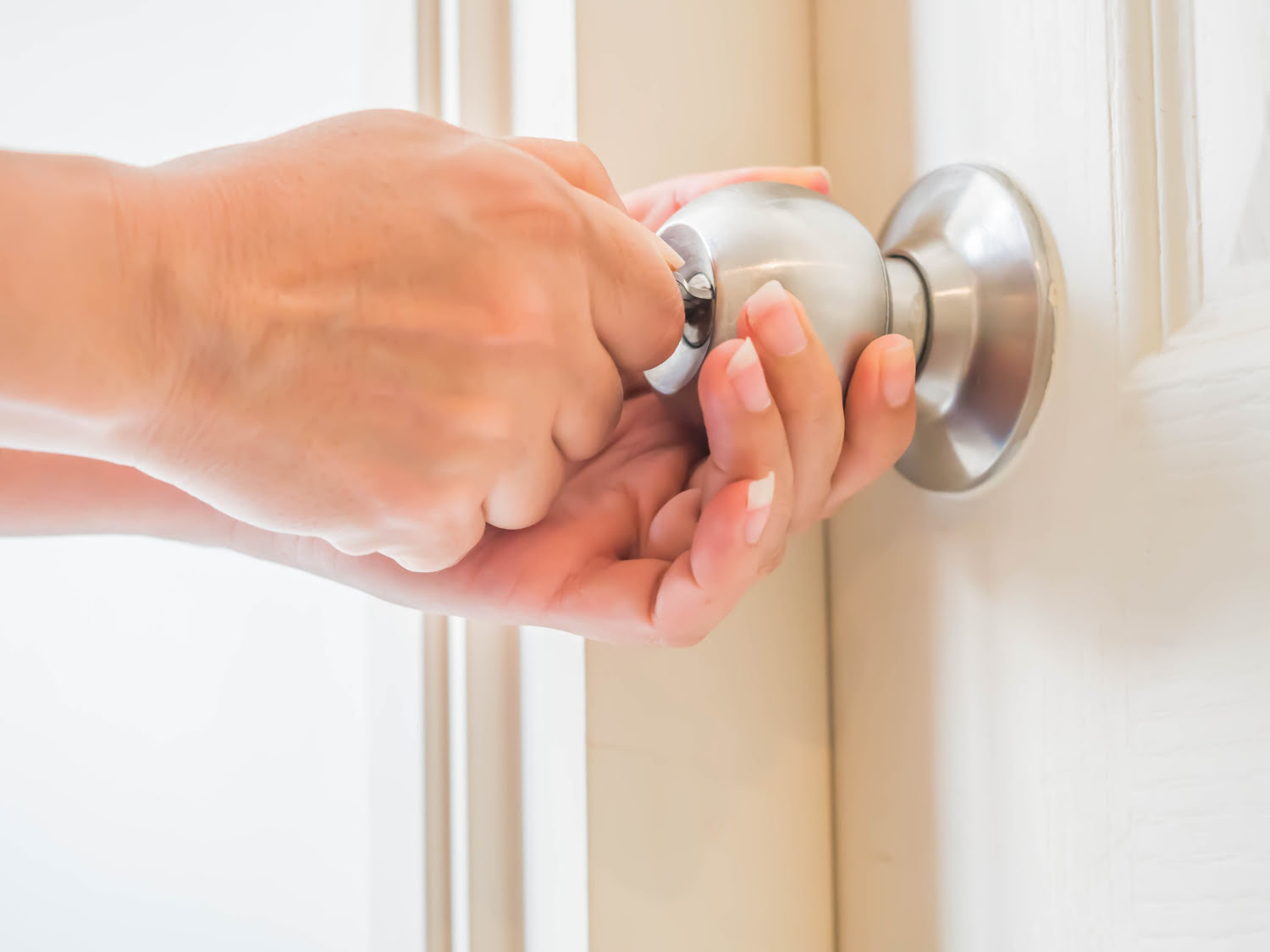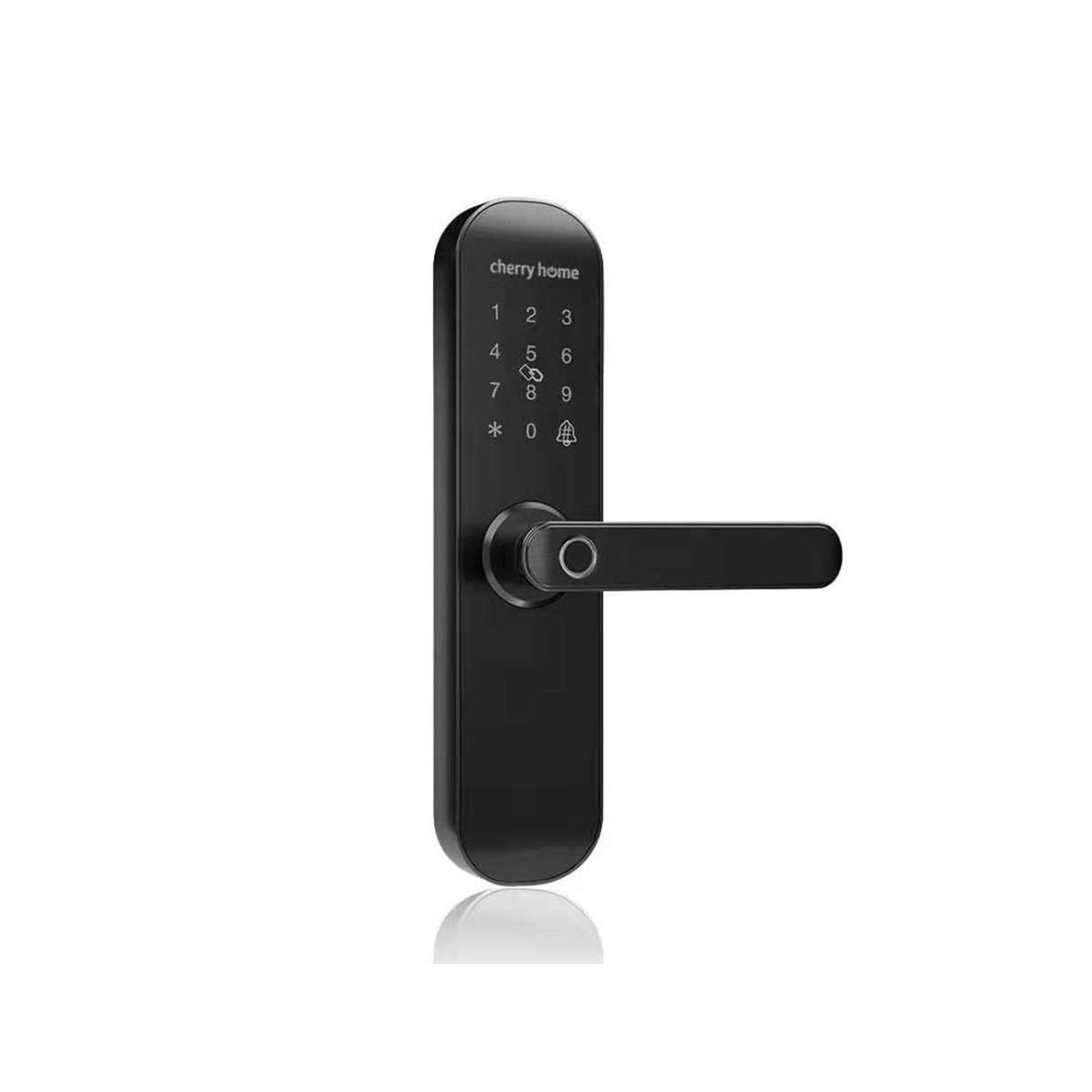Home>Technology>Security & Surveillance>How To Open A Door Knob Lock


Security & Surveillance
How To Open A Door Knob Lock
Modified: October 20, 2024
Learn how to open a door knob lock for improved security and surveillance. Discover effective techniques and tips to ensure the safety of your property. Unlock the door to enhanced protection today!
(Many of the links in this article redirect to a specific reviewed product. Your purchase of these products through affiliate links helps to generate commission for Storables.com, at no extra cost. Learn more)
Introduction
Read more: How To Install A Door Knob With A Lock
Understanding the Importance of Knowing How to Open a Door Knob Lock
Imagine returning home after a long day at work, only to find yourself locked out due to a malfunctioning door knob lock. Frustrating, isn't it? Understanding how to open a door knob lock can save you from such exasperating situations. Whether you've accidentally locked yourself out or encountered a faulty lock, having the knowledge and tools to address the issue can be incredibly empowering.
In this comprehensive guide, we will delve into the intricacies of door knob locks, exploring the different types and the tools required for opening them. Additionally, we will provide a step-by-step walkthrough to effectively open a door knob lock, empowering you to regain access to your space with confidence. Moreover, we will share valuable tips for maintaining and preventing door knob lock issues, ensuring the longevity and functionality of your locks.
By the end of this guide, you will possess the expertise to tackle door knob lock challenges, transforming potential moments of frustration into opportunities to showcase your resourcefulness. Let's embark on this insightful journey to unravel the secrets of door knob locks and equip ourselves with the essential skills to conquer lock-related dilemmas.
Key Takeaways:
- Mastering the art of opening door knob locks empowers you to handle lock-related challenges with confidence and resourcefulness, ensuring access to your space in a safe and efficient manner.
- Regular maintenance and responsible usage of door knob locks can enhance security, prevent lockouts, and prolong the functionality of your locks, contributing to a safer living environment.
Understanding the Different Types of Door Knob Locks
Door knob locks come in various designs, each serving specific purposes and offering distinct features. Understanding the different types of door knob locks is crucial for effectively addressing lock-related issues and selecting the most suitable lock for your needs.
1. Keyed Entry Door Knob Locks: These locks require a key to unlock from the outside and typically have a push-button or twist mechanism on the inside to lock the door.
2. Privacy Door Knob Locks: Commonly found in interior spaces such as bedrooms and bathrooms, privacy door knob locks feature a push-button or turn-socket mechanism for locking from the inside. They can be unlocked from the outside with a small tool or pin.
3. Passage Door Knob Locks: Also known as non-locking door knob sets, passage locks do not have a locking mechanism, making them ideal for hallways, closets, and other areas where security is not a primary concern.
4. Dummy Door Knob Locks: These non-functional door knobs are purely decorative and do not turn or have a locking mechanism. They are often used on closet doors or double doors where only one side requires a handle.
5. Keyless Entry Door Knob Locks: Utilizing electronic or mechanical keypads, keyless entry door knob locks eliminate the need for traditional keys, offering convenience and enhanced security through personalized access codes.
Each type of door knob lock presents unique characteristics and functionalities, catering to diverse security and accessibility requirements. By familiarizing yourself with these variations, you can make informed decisions when choosing door knob locks for different areas within your home or property.
Tools Required for Opening a Door Knob Lock
When faced with a locked door knob, having the right tools at your disposal is essential for successfully gaining entry without causing damage to the lock or the door. Here are the primary tools required for opening a door knob lock:
- Screwdriver: A flathead or Phillips screwdriver is often necessary for removing the screws securing the door knob plate or assembly.
- Key Extractor Tool: This specialized tool is designed to safely remove a broken key from the lock cylinder, facilitating access without the need for a locksmith.
- Paperclip or Bobby Pin: In the absence of a key, a paperclip or bobby pin can be fashioned into a makeshift tool for manipulating the lock mechanism.
- Lubricant: A silicone-based or graphite lubricant can aid in loosening a stubborn or jammed lock, enabling smoother operation.
- Tension Wrench: Often used in lock picking, a tension wrench applies slight pressure to the lock cylinder, allowing for the manipulation of the internal pins or mechanisms.
- Hammer and Chisel (Optional): In cases where the lock needs to be forcefully removed, a hammer and chisel can be employed to dislodge the lock assembly from the door.
It’s important to exercise caution and patience when utilizing these tools, especially if you are attempting to open a lock without prior experience. While some methods may provide temporary access, seeking professional assistance is advisable to ensure the long-term integrity and security of the lock and door.
By familiarizing yourself with these essential tools, you can be better prepared to address unexpected lock-related challenges and take the necessary steps to regain access in a safe and efficient manner.
Step-by-Step Guide to Opening a Door Knob Lock
When confronted with a locked door knob, whether due to a misplaced key or a malfunctioning lock mechanism, following a systematic approach can facilitate the process of gaining entry without causing unnecessary damage. Here’s a step-by-step guide to opening a door knob lock:
- Assess the Situation: Determine the reason for the lockout and evaluate the condition of the lock. If the key is lost or broken, consider alternative methods for accessing the space.
- Inspect the Lock: Examine the door knob and lock cylinder for any visible issues or signs of damage. This initial assessment can provide valuable insights into the nature of the problem.
- Retrieve Spare Keys: If spare keys are accessible, attempt to use them to unlock the door. Alternatively, consider seeking assistance from individuals who may have spare keys or possess lock-picking skills.
- Utilize Key Extraction Tools: In the case of a broken key lodged inside the lock, employ a key extractor tool to carefully remove the broken piece without causing further damage to the lock cylinder.
- Apply Lubrication: If the lock exhibits signs of stiffness or resistance, apply a suitable lubricant to the keyway and internal components. This can help alleviate friction and enhance the operation of the lock.
- Manipulate the Lock Mechanism: Using a tension wrench and a paperclip or improvised tool, gently manipulate the internal pins or mechanisms of the lock to simulate the action of a key. Exercise patience and precision during this process.
- Remove the Lock Assembly: As a last resort, if all other methods prove ineffective and access is imperative, consider removing the entire lock assembly from the door using appropriate tools. Exercise caution to avoid causing damage to the door or surrounding components.
It’s important to approach the task with careful consideration for the integrity of the lock and door, as well as personal safety. If uncertainties arise or the situation proves challenging, seeking professional locksmith services is advisable to ensure a swift and secure resolution.
By following these steps and exercising prudence, you can navigate lock-related predicaments with confidence and resourcefulness, ultimately regaining access to your space while preserving the functionality of the door knob lock.
Use a tension wrench and a lock pick to manipulate the pins inside the lock. Apply light pressure with the tension wrench while lifting the pins with the lock pick until the lock turns.
Read more: How To Change Door Knob With Lock
Tips for Maintaining and Preventing Door Knob Lock Issues
Proactive maintenance and preventive measures can significantly contribute to the longevity and optimal performance of door knob locks, reducing the likelihood of unexpected lock-related challenges. Here are valuable tips for maintaining and preventing door knob lock issues:
- Regular Lubrication: Apply a silicone-based or graphite lubricant to the keyway and internal components of the lock at regular intervals, ensuring smooth operation and minimizing friction-induced wear.
- Key Management: Safeguard keys and avoid subjecting them to excessive force or bending, as damaged keys can compromise the effectiveness of the lock and lead to potential lockouts.
- Periodic Inspection: Routinely inspect the condition of door knob locks, checking for loose screws, misalignments, or signs of wear. Addressing minor issues promptly can prevent them from escalating into major concerns.
- Secure Installation: When installing or replacing door knob locks, ensure that the assembly is securely affixed to the door, with all components aligned and functioning as intended.
- Weather Protection: Shield exterior door knob locks from exposure to harsh weather conditions, utilizing protective coverings or seals to mitigate the impact of moisture and temperature fluctuations.
- Rekeying and Upgrades: Consider rekeying the locks or upgrading to advanced security features when changing occupancy or in response to security concerns, enhancing the overall protection of the premises.
- Educate Occupants: Communicate proper usage guidelines to household members or occupants, emphasizing the importance of gentle handling and responsible lock operation to prevent inadvertent lockouts and avoidable damage.
- Professional Maintenance: Engage the services of qualified locksmiths for periodic maintenance and assessments of door knob locks, leveraging their expertise to detect and address potential issues proactively.
By integrating these maintenance tips into your routine and promoting awareness of responsible lock usage, you can mitigate the risk of door knob lock malfunctions and enhance the overall security and convenience of your living or working environment.
Conclusion
Embarking on the journey to understand and master the intricacies of door knob locks has equipped you with valuable insights and practical skills to navigate lock-related challenges with confidence and resourcefulness. By delving into the different types of door knob locks and familiarizing yourself with the essential tools for opening them, you have gained a deeper understanding of the mechanisms that safeguard your spaces.
Armed with a step-by-step guide to opening a door knob lock, you are now prepared to address lockouts and malfunctions in a methodical and considerate manner, preserving the integrity of the locks and doors while regaining access to your environment.
Furthermore, the tips for maintaining and preventing door knob lock issues serve as proactive measures to sustain the functionality and longevity of your locks, minimizing the likelihood of unforeseen complications and enhancing the overall security of your premises.
As you embrace the knowledge and strategies presented in this comprehensive guide, you are empowered to transform potential moments of frustration into opportunities to showcase your resourcefulness and resilience. Whether it’s a misplaced key, a jammed lock, or a desire to enhance the security of your living or working space, you now possess the expertise to navigate door knob lock challenges with poise and effectiveness.
By integrating these insights into your approach to home security and maintenance, you contribute to a safer and more secure environment for yourself and those around you. Remember, while the mastery of door knob locks opens doors quite literally, it also symbolizes your ability to overcome obstacles and embrace the responsibility of safeguarding your personal spaces.
As you continue on your journey, may your newfound knowledge empower you to approach door knob locks with confidence and competence, transforming potential dilemmas into opportunities for growth and ingenuity.
Frequently Asked Questions about How To Open A Door Knob Lock
Was this page helpful?
At Storables.com, we guarantee accurate and reliable information. Our content, validated by Expert Board Contributors, is crafted following stringent Editorial Policies. We're committed to providing you with well-researched, expert-backed insights for all your informational needs.















0 thoughts on “How To Open A Door Knob Lock”